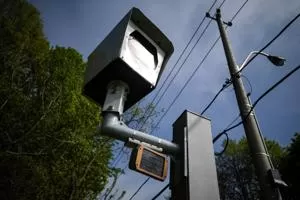Unlocking Urban Flow: How Next-Gen Tech is Revolutionizing City Navigation and Safety
Share- Nishadil
- October 23, 2025
- 0 Comments
- 3 minutes read
- 22 Views

Street Smarts: Paving the Way for Safer, Smarter Urban Journeys
Discover how cutting-edge technologies like AI-powered traffic systems and advanced sensor networks are transforming our cities, making daily commutes safer and more efficient for everyone.
Our cities are dynamic, living entities, constantly evolving and presenting a myriad of challenges to their inhabitants. From the daily gridlock that tests our patience to the persistent safety concerns for pedestrians and cyclists, navigating the urban jungle can often feel like an uphill battle.
But what if our streets themselves could become smarter, more responsive, and inherently safer? Welcome to the era of 'Street Smarts,' where cutting-edge technology is actively reshaping how we move through our urban landscapes.
The vision of a truly smart city isn't just about futuristic concepts; it's rapidly becoming a tangible reality.
At the heart of this transformation lies a powerful combination of artificial intelligence (AI), advanced sensor networks, and real-time data analytics. Imagine traffic lights that don't just cycle through pre-set timings but intelligently adapt to actual traffic flow, easing congestion by prioritizing busy routes or emergency vehicles.
This isn't science fiction; it's a capability that many cities are already implementing, leading to smoother commutes and significantly reduced idling times.
Beyond traffic flow, the emphasis is heavily placed on enhancing safety for all road users, particularly our most vulnerable: pedestrians and cyclists.
New technologies are emerging that can detect pedestrians crossing at non-designated areas or cyclists in blind spots, alerting drivers and even autonomous systems to potential hazards. Smart crosswalks, equipped with illuminated markers and sensors, can make crossings safer in low visibility conditions or for distracted individuals.
This proactive approach to safety promises to drastically reduce accidents and foster a more harmonious co-existence on our streets.
Moreover, smart city infrastructure extends to monitoring and maintaining the health of our urban arteries. Sensors embedded in roads and bridges can detect wear and tear, temperature fluctuations, and even structural stress, providing crucial data for preventative maintenance before problems escalate.
This not only saves taxpayer money in the long run but also prevents unexpected road closures and ensures the longevity of vital infrastructure. Public transit systems are also getting a significant upgrade, with real-time tracking, predictive arrival times, and demand-responsive routing making urban transport more efficient and user-friendly than ever before.
The journey towards truly smart cities is an ongoing one, requiring continuous innovation, collaboration between public and private sectors, and a commitment to integrating these technologies seamlessly into our daily lives.
While the initial investment can be substantial, the long-term benefits—safer streets, reduced congestion, cleaner air, and a more efficient urban environment—are invaluable. As technology continues to advance, our cities are poised to become not just places we live, but intelligent ecosystems that actively work to improve our quality of life, one smart street at a time.
.Disclaimer: This article was generated in part using artificial intelligence and may contain errors or omissions. The content is provided for informational purposes only and does not constitute professional advice. We makes no representations or warranties regarding its accuracy, completeness, or reliability. Readers are advised to verify the information independently before relying on







